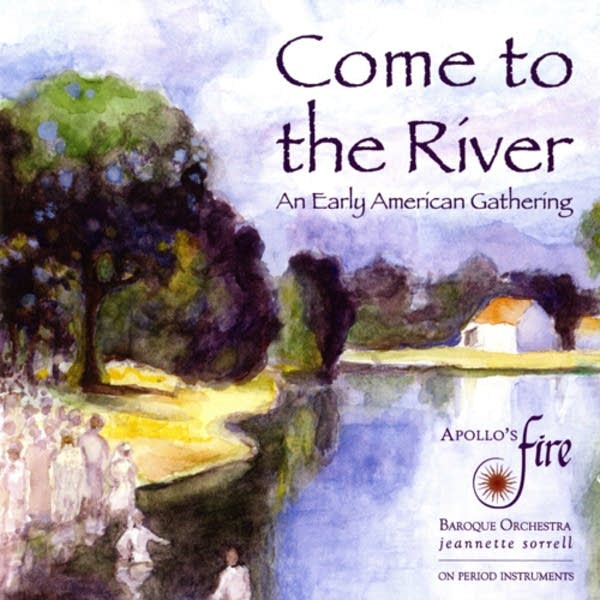
When she was 15 years old Jeannette Sorrell landed her first job -playing piano for the Greenway Southern Baptist Church in Virginia where she and her family had moved a year earlier. It was in that small Revivalist congregation in the Shenandoah Valley where the seeds were planted for her latest recording, "Come to the River."
Now, Jeannette Sorrell is best known as the founder of Cleveland's baroque orchestra Apollo's Fire, so early American music is not what you might expect from her, but don't let that deter you. Sorrell's natural instincts as a performer and as a music historian allow this ensemble to bring a polished, yet improvised approach to these traditional American dances, songs, and hymns.
This recording is a covered-wagon journey through early 19th-century rural America. The first section of this program is just plain fun. It opens with a pair of Appalachian barn dances arranged by Jeannette Sorrell. The professional musicians of Apollo's Fire give these dances a more refined feel. The driving rhythm is propelled by Rachel Jones on fiddle and Tina Bergmann, a virtuoso on the hammered dulcimer.
The second section is titled "Love and Death." It reflects the many sources of early American music, from old English ballads that were preserved in the New World, to Irish dance tunes. Soprano Sandra Simon's crystalline voice is featured on the moving Elizabethan ballad, "The Three Ravens." There are several versions of both the tune and the text in Cecil Sharp's New England and Appalachian folk collection. Solo flute and guitar set the stage for the mournful vocal line.
Tenor Scott Mello yearns for a lost love in the traditional Southern Appalachian ballad, "Old Virginny." Mello entrances the listener with his mellifluous voice. This gorgeous arrangement also features cellist Rene Schiffer who echoes the tenor line.
The warmth of Kathy Stewart's wooden flute brings the misty hills of Ireland into full view when Apollo's Fire kicks up its heels during a medley of Irish dance tunes titled "Lark in the Morning."
The final stop on this journey through rural 19th century America takes us to a revival meeting. This was where people would gather from miles around for a week of intensely emotional worship meetings. Shape-note singing was born out of these meetings. This style of singing featured simple musical notation that made it easy for everyone to sing along. Several different shape-note hymnals were published in the 19th century. "What Wondrous Love is This," comes from the "Sacred Harp" collection of 1844. Jeannette Sorrel tastefully accents this arrangement for four voices with cello and harpsichord.
As a young pianist for a small Revivalist congregation in the Shenandoah Valley, Jeanette Sorrell was exposed to a whole new culture. She was mesmerized by the beautiful, austere music, the open harmonies of the shape-note hymns, and the sense of passion and community she experienced within the congregation. As an adult she's dug deeper into its roots and its history, and she's delighted to share this music with the rest of us.
Love the music?
Show your support by making a gift to YourClassical.
Each day, we’re here for you with thoughtful streams that set the tone for your day – not to mention the stories and programs that inspire you to new discovery and help you explore the music you love.
YourClassical is available for free, because we are listener-supported public media. Take a moment to make your gift today.


